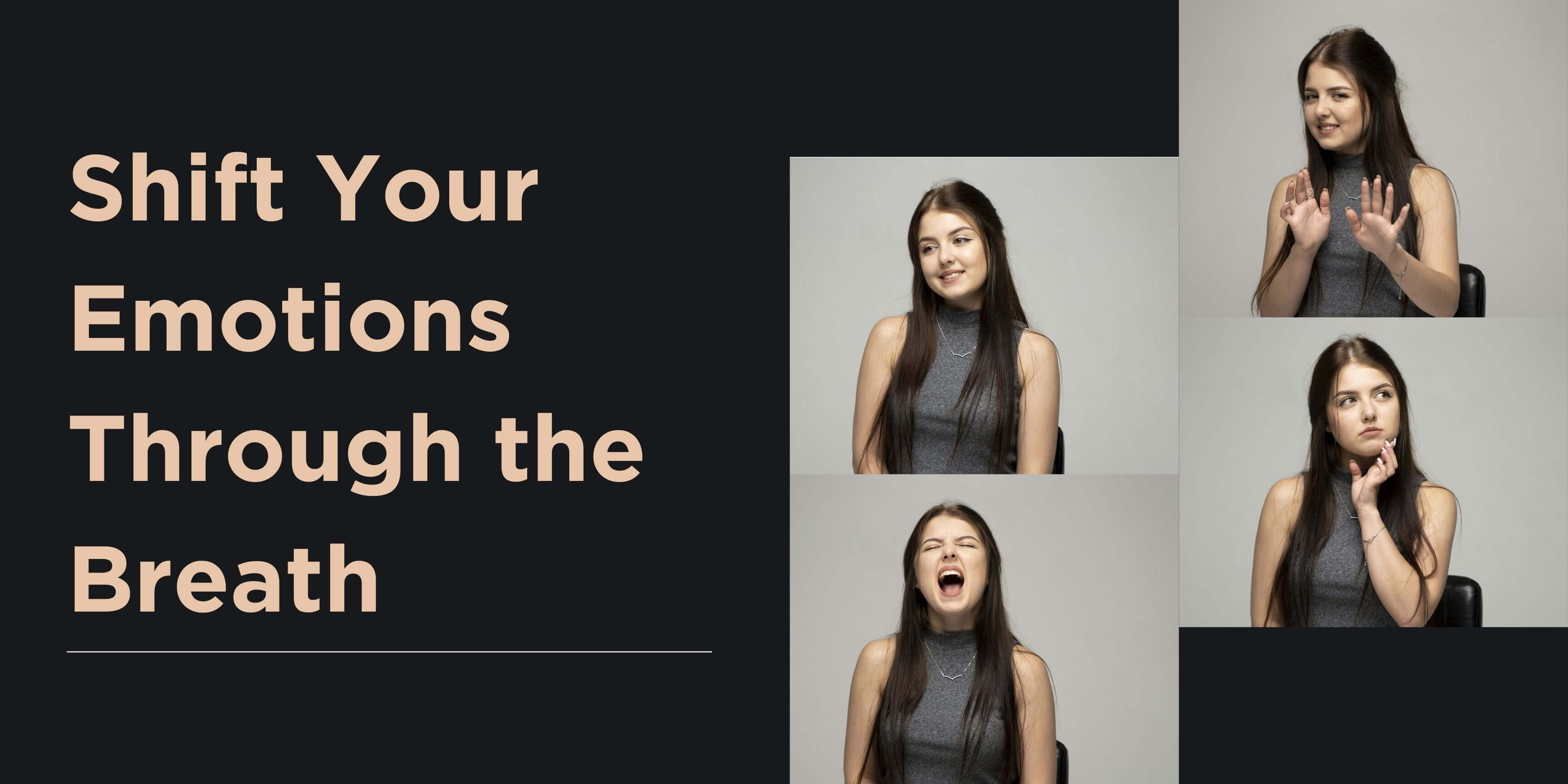Shift Your Emotions Through the Breath
The depth and pattern of your breathing strongly affect how you feel mentally and emotionally at any given moment. In fact, every emotion has a corresponding breath pattern. When we learn to notice these patterns, we can shift our emotional state in a positive direction through the conscious use of our breath.
The depth and pattern of your breathing strongly affect how you feel mentally and emotionally at any given moment. Yes, you read that correctly. Your breath and your emotions are deeply intertwined.
The majority of people breathe on auto-pilot most of the time.
But have you ever stopped long enough to tune in and notice how you naturally breathe? Do you breathe through your nose or your mouth? Do you breathe into your upper chest or deep into your belly? How many cycles of breath do you take in one minute? Are your jaw, neck, and shoulders relaxed or tense?
Every breath you take is either regulating or dysregulating your nervous system. Rapid, shallow chest breathing is a fear-based pattern that puts the nervous system on high alert. On the other hand, slow, deep, diaphragmatic breathing is a love-based pattern that calms and soothes the nervous system, signaling that all is safe.
Every emotion has a corresponding breath pattern. When we learn to notice these patterns, we can shift our emotional state through the conscious use of our breath. In other words, we can intentionally choose our emotional state.
Below is a list of common emotions and their corresponding breath patterns.
- Anxiety, worry, apprehension, distress - shallow, rapid, high chest breathing.
- Shock, panic, fright - rapid inhales via the mouth, sometimes “reverse breathing” by sucking the belly inward on the inhale.
- Joy, happiness, delight - slow, deep, diaphragmatic breaths that feel relaxed and grounded.
- Enthusiasm, excitement, zest - deep breaths in through the nose and a relaxed exhale, often through the mouth.
- Love, caring, nurturing - Balanced breaths, in through the nose, out through the mouth.
- Anger, bitterness, resentment - shallow, still breathing via the chest and nose. Often accompanied by clenching or tension in the jaw, neck, and shoulders.
- Irritation, agitation - moderate speed of breath, in and out through the nose and into the chest. Not as deep and relaxed as the love-based patterns.
An interesting exercise is to notice what your current emotion is. Next, observe your posture, body language, and the way you are breathing. Then choose a specific emotion you would like to shift into and practice the corresponding breath pattern. It also helps to assume an open, relaxed posture. It typically only takes a handful of breath cycles to begin feeling the shift.
The beauty of this exercise is that you can use it anywhere, anytime. All it takes is a few moments of awareness and the intentional choice to use a different breathing pattern.
Doing so can shut off a chronic or acute stress response in the body. It signals that it is safe and shifts the body and the mind into a calm yet alert state. We feel safe interacting with the people and the world around us when we find this balance. We also feel safe to slow down and rest when appropriate.
It is so empowering when people realize they can shift and manage their emotions in a healthy way. They don’t have to rely on caffeine, alcohol, sugar, food, prescriptions, or other drugs to help them feel stable and happy. Instead, they can use their awareness and the power of their breath to connect with their emotions and move them in a positive direction!




